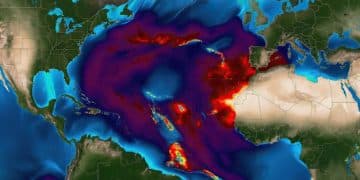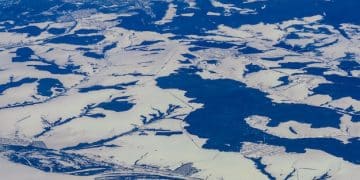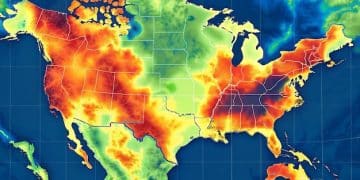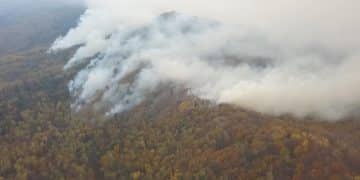How Does Climate Change Affect Droughts in the US?
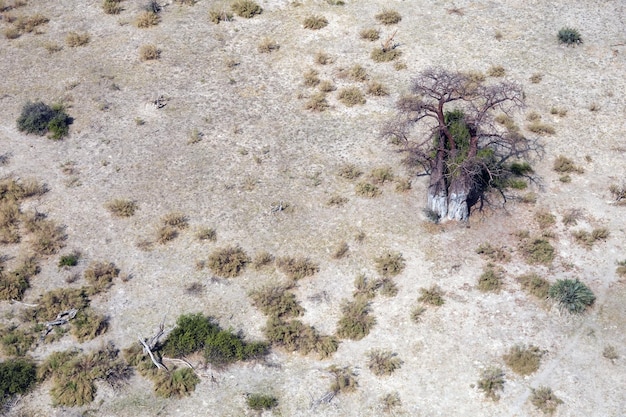
Climate change is increasingly altering the frequency and severity of droughts across the United States through amplified atmospheric water demand, altered precipitation patterns, and earlier snowmelt, leading to intensified and prolonged dry periods.
Droughts are a persistent and devastating natural hazard, impacting ecosystems, economies, and communities across the United States. While historically cyclical, there is growing evidence, supported by robust scientific inquiry, that global climate change is profoundly altering their dynamics. The question of how does climate change affect the frequency and severity of droughts in the US is not merely academic; it is a critical inquiry for understanding future water availability, agricultural viability, and societal resilience in a warming world.
Understanding the climate-drought connection
The relationship between climate change and drought is complex, yet increasingly clear. Climate change does not simply “cause” drought in a direct, simple manner, but rather acts as a powerful amplifier, exacerbating existing conditions and creating new vulnerabilities. This amplification occurs through several interconnected mechanisms, fundamentally altering the hydrological cycle. The key pathways involve changes in temperature, precipitation patterns, and the timing of snowmelt.
One primary mechanism is the increase in atmospheric water demand driven by rising temperatures. Warmer air has a greater capacity to hold moisture. As global temperatures climb, the atmosphere effectively “pulls” more moisture from the land surface through increased evaporation from soils, water bodies, and transpiration from plants. This process, known as evapotranspiration, is a critical component of the water cycle. When evapotranspiration rates increase significantly due to higher temperatures, even areas receiving average precipitation can experience hydrological drought conditions because the demand for water outstrips the supply. This phenomenon is often referred to as “flash drought,” where dry conditions emerge rapidly due to intense heat waves.
Another crucial factor is the alteration of precipitation patterns. Climate models indicate that while some regions might see an increase in overall precipitation, others will experience significant decreases, or shifts in the type, intensity, and timing of rainfall. For instance, more extreme precipitation events (heavy downpours) might occur, leading to increased runoff rather than effective soil moisture replenishment, which is vital for agricultural and ecological health. Conversely, prolonged dry spells between these intense events can become more common and last longer. The spatial distribution of rain and snow is also shifting, with some regions becoming persistently drier.
The role of the Western US
The Western United States provides a stark example of these interconnected factors. This region is particularly reliant on snowpack for its water supply, which typically accumulates over winter and melts gradually in spring and summer, providing a steady flow of water to rivers and reservoirs. However, rising temperatures have led to a significant reduction in snowpack accumulation and an earlier onset of spring melt. This means that a crucial natural reservoir is diminishing, and the water that does melt becomes available earlier in the season, often before it is most needed during the hot summer months. The earlier melt also exposes soils to longer periods of drying under intense solar radiation, further enhancing evapotranspiration and increasing the risk of wildfires. The compounding effect of diminished snowpack, early melt, and increased atmospheric demand creates a vicious cycle that intensifies drought conditions.
- Increased Evapotranspiration: Warmer temperatures lead to more water evaporating from land and plants, speeding up drying.
- Altered Precipitation: Shifts in rainfall patterns mean some areas get less rain, or rain falls in shorter, more intense bursts.
- Reduced Snowpack: Higher temperatures cause less snow to accumulate and melt earlier, diminishing vital water reserves.
In essence, climate change is not merely creating dry conditions from scratch; it is making already vulnerable regions more susceptible to drought, prolonging dry spells, and intensifying the severity of water deficits when they do occur. The feedback loop between temperature, water availability, and land surface conditions is accelerating, painting a challenging picture for water management and resource allocation across the US.
The interconnectedness of these climatic factors underscores the complexity of drought events. It’s rarely a single factor but a confluence of changes that creates the prolonged and severe water deficits we are increasingly observing. A deeper understanding of these mechanisms is essential for effective mitigation and adaptation strategies.
Evapotranspiration and agricultural strain
Evapotranspiration (ET) represents the total amount of water transferred from the land surface to the atmosphere through evaporation from the soil and other surfaces, and transpiration from plants. In a warming climate, understanding the dynamics of ET is paramount, particularly regarding its influence on agricultural systems and the intensification of droughts. As temperatures rise due to climate change, the atmosphere’s capacity to hold water increases, leading to a greater “thirst” for moisture from the Earth’s surface. This elevated atmospheric demand drives up the rates of ET, even if precipitation levels remain constant. The consequence is a rapid depletion of soil moisture, leading to agricultural drought, where plants experience water stress, impacting crop yields and livestock. This phenomenon is often exacerbated by heatwaves, which simultaneously increase ET and place additional thermal stress on crops.
Impact on crop yields
The implications for agriculture are profound. Farmers rely heavily on predictable seasons and adequate soil moisture for successful harvests. Increased ET means that crops require more water to maintain their physiological functions, pushing irrigation demands higher in regions already facing water scarcity. When irrigation is insufficient or unavailable, plants shut down their metabolic processes, leading to stunted growth, reduced yields, or even complete crop failure. This not only threatens food security but also has significant economic ramifications for agricultural communities and national economies, especially in key agricultural states like California and the Great Plains. The shift in planting and harvesting cycles, the need for more drought-resistant crop varieties, and the increased cost of water are all direct consequences of elevated ET.
- Water Stress on Crops: Higher temperatures cause plants to transpire more, requiring greater water intake.
- Increased Irrigation Needs: Agricultural sectors face amplified demands for water, straining already scarce resources.
- Reduced Crop Yields: Insufficient water leads to stunted growth and lower harvests, impacting food supply and farmer livelihoods.
Furthermore, accelerated ET can lead to a quicker onset of drought conditions, sometimes referred to as “flash droughts.” These events can develop over a matter of weeks rather than months, catching agricultural producers off guard and leaving little time for adaptive measures. The speed and intensity of these droughts are a direct result of the atmosphere aggressively extracting moisture from the land surface, leaving soils parched and plants stressed in what seems like a sudden shift from relatively normal conditions. The rapid drying out of vegetation also creates a positive feedback loop, increasing the risk and intensity of wildfires, particularly in arid and semi-arid regions. These fires further degrade soil quality, reduce vegetation cover, and worsen water retention, making the land more susceptible to future drought conditions.
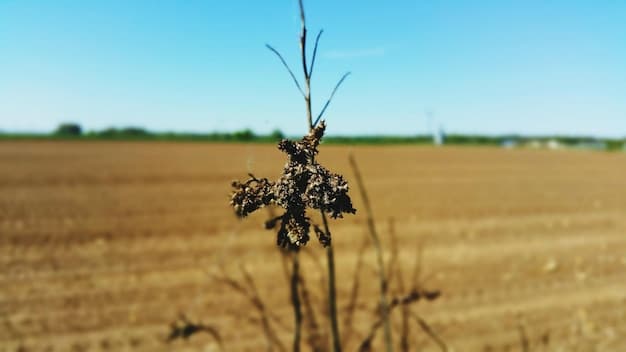
The agricultural strain imposed by rising evapotranspiration represents one of the most immediate and tangible impacts of climate change on drought severity. It transforms a slow-moving natural hazard into a rapidly evolving crisis, demanding swift and innovative responses from policymakers, researchers, and farmers alike to safeguard food production and rural economies. Addressing this challenge requires a multi-faceted approach, including improved water management practices, development of drought-resistant crops, and the implementation of climate-smart agricultural techniques to build resilience in the face of escalating water demands.
Shifting precipitation patterns and water availability
Climate change is fundamentally altering global precipitation patterns, and the United States is experiencing significant and varied impacts. These shifts manifest not just in overall changes in annual rainfall totals but, more critically, in the spatial distribution, intensity, and timing of precipitation events. Some regions may see an increase in total precipitation, while others face stark declines, and virtually all areas are likely to experience a change in the character of rainfall, which has profound implications for water availability and drought dynamics.
One notable trend is the increasing frequency and intensity of extreme precipitation events in certain areas, particularly the Midwest and Northeast. While these events can lead to flooding, they do not necessarily alleviate long-term drought conditions. Intense downpours often result in rapid runoff, overwhelming drainage systems and preventing adequate infiltration into the soil. This means less water is stored as soil moisture or recharged into groundwater aquifers, which are crucial for sustaining ecosystems and human water supplies during drier periods. Therefore, paradoxically, regions can experience both flooding and hydrological drought within the same year or even season, highlighting the challenge of managing water resources in an era of climatic extremes.
Regional divergences
Conversely, many critical regions, especially the American West and Southwest, are experiencing significant decreases in average annual precipitation, coupled with prolonged dry spells. These vast areas, already prone to aridity, are becoming even drier. The combination of reduced rainfall and increased temperatures from climate change means that the water deficit intensifies rapidly. The “aridification” of the Southwest, for example, is a well-documented phenomenon, where natural variability in precipitation is amplified by human-induced warming, leading to more frequent and severe droughts. This has dire consequences for large river basins like the Colorado River, which supplies water to millions of people and vast agricultural lands, with reservoir levels consistently hitting historic lows.
Moreover, the type of precipitation is changing. In mountain regions, a larger proportion of precipitation is falling as rain rather than snow, especially at lower elevations. This reduces the crucial snowpack, which acts as a natural water reservoir, slowly releasing water during the spring and summer melt seasons. Less snowpack means earlier runoff, which can be difficult to capture in existing reservoir systems, and less water available during the peak demand periods of late summer. This shift from snow to rain is a significant driver of hydrological drought in the Western US, affecting river flows, reservoir storage, and ecological health.
- Increased Extreme Rainfall: Heavy downpours lead to runoff, not effective soil moisture replenishment.
- Decreased Precipitation in Arid Zones: Western and Southwestern US face further reduction in rainfall, exacerbating existing aridity.
- Shift from Snow to Rain: Less snowpack means earlier and less sustained water availability from natural reservoirs.
The shifting precipitation patterns fundamentally alter the predictability and reliability of water supplies. This poses immense challenges for urban water management, agriculture, energy production (hydroelectric power), and ecosystem preservation. Adapting to these new patterns necessitates comprehensive water conservation strategies, investment in water infrastructure, and the development of more resilient water supply systems that can cope with both periods of intense rain and prolonged drought. Understanding these regional divergences and adapting water management practices accordingly is crucial for building resilience in a climate-altered world.
Snowpack reduction and early melt in the Western US
For the Western United States, snowpack is not merely a seasonal phenomenon; it is an economic and ecological lifeline. The vast mountain ranges, particularly the Sierra Nevada and the Rocky Mountains, accumulate significant snow over winter, creating a natural frozen reservoir that slowly melts during spring and summer. This gradual release of water sustains river flows, replenishes reservoirs, and provides essential irrigation for the region’s colossal agricultural industry, along with drinking water for millions. However, climate change is profoundly disrupting this critical hydrological process, leading to significant reductions in snowpack and an earlier onset of melt, exacerbating drought conditions across the region.
Rising temperatures are the primary driver of this change. Warmer winters mean that a greater proportion of precipitation falls as rain rather than snow, particularly at lower and mid-elevations. When snow does fall, warmer temperatures can lead to accelerated melting, even during the winter months, preventing the build-up of a substantial seasonal snowpack. The “snow-water equivalent” (SWE), a measure of the amount of water contained within the snowpack, has been steadily declining across many Western mountain ranges over the past several decades. This reduction directly translates to less water available for downstream ecosystems and human use later in the year.
Consequences for water management
An equally critical impact is the earlier timing of snowmelt. Higher spring temperatures cause the snowpack to melt weeks, and even months, earlier than historical averages. This early runoff presents significant challenges for water managers. Reservoirs, designed to capture and store water from the traditional late-spring and early-summer melt, may not be able to accommodate the earlier influx, leading to inefficient storage and potentially requiring releases that are not synchronized with peak water demand. This means that by the time the hot, dry summer months arrive, when water is most needed for agriculture and urban consumption, reservoir levels are already significantly depleted, intensifying the severity and duration of hydrological droughts.
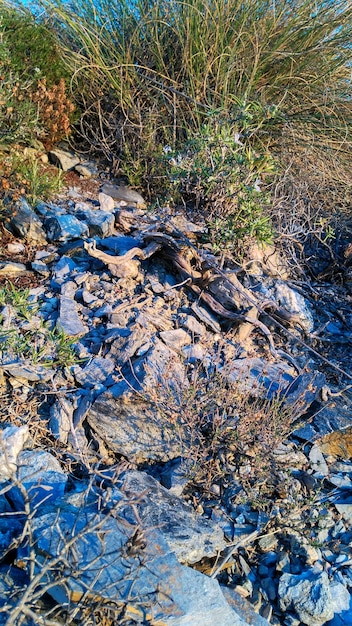
The implications of reduced snowpack and early melt extend beyond water supply. Ecologically, many species rely on the timing of snowmelt for their life cycles. Fisheries, in particular, are affected by warmer and lower river flows. The earlier exposure of soils and vegetation due to melt also increases the risk of wildfires; drier fuels become more susceptible to ignition and faster spread. Economically, the lucrative ski industry is directly threatened by diminished snow, impacting tourism and local livelihoods. Addressing these challenges requires strategic adaptation, including investment in more efficient water storage, innovative demand management, and trans-boundary water sharing agreements.
- Reduced Snow-Water Equivalent (SWE): Less water is stored as snow, leading to diminished water reserves.
- Earlier Melt Onset: Snow melts weeks earlier, creating a mismatch with peak water demand.
- Increased Wildfire Risk: Drier conditions and earlier melt contribute to longer and more intense fire seasons.
In essence, the Western US is experiencing a profound shift in its natural water infrastructure. The historically reliable “frozen reservoir” is becoming less reliable, forcing a rapid re-evaluation of water management strategies and highlighting the urgent need for climate change mitigation to protect this vital resource. The interplay between warming temperatures, changing precipitation forms, and altered melt patterns is a significant factor in the escalating frequency and severity of droughts across this critical region.
Groundwater depletion and sinking land
In the face of prolonged droughts and diminished surface water supplies, many regions across the United States, particularly those with extensive agricultural industries, have increasingly relied on groundwater as a primary source. This reliance, while crucial for immediate needs, has led to a significant and often unsustainable rate of groundwater depletion. The extraction of water from underground aquifers far exceeds the rate at which these natural reservoirs can be replenished by rainfall or surface water infiltration, leading to a cascade of environmental and economic consequences that exacerbate the long-term impacts of drought.
One of the most concerning physical manifestations of severe groundwater depletion is land subsidence, or the gradual sinking of the Earth’s surface. When water is pumped out of aquifers, the empty pore spaces within the geological formations collapse under the weight of overlying sediments. This compaction of the aquifer system is irreversible; even if water levels eventually recover, the lost storage capacity is permanent. Regions like California’s Central Valley, a major agricultural hub, have experienced feet — and in some areas, tens of feet — of subsidence over decades. This sinking land can damage critical infrastructure, including roads, bridges, canals, and pipelines, leading to immense repair costs and disrupting vital services.
Long-term consequences
Beyond structural damage, groundwater depletion has profound environmental impacts. Lowering water tables can dry up rivers, streams, and wetlands that are hydrologically connected to the aquifers, destroying ecosystems and reducing biodiversity. It can also lead to saltwater intrusion in coastal areas, where reduced freshwater pressure allows saline ocean water to seep into freshwater aquifers, rendering them unusable for drinking or irrigation. This is a growing problem in states like Florida and parts of California, making already scarce freshwater resources even more limited.
Economically, increased pumping depths require more energy, raising operational costs for farmers and municipalities. As water levels decline, wells may need to be deepened or new wells drilled, representing significant capital investments. For smaller communities or individual farmers, these costs can be prohibitive, threatening their livelihoods and contributing to rural economic instability. The long-term sustainability of agriculture, particularly in drought-prone areas, is inextricably linked to maintaining healthy groundwater reserves. Without sufficient recharge, current rates of extraction are simply unsustainable in a climate where surface water supplies are becoming increasingly unreliable.
- Exacerbated Drought Impacts: Over-reliance on groundwater for irrigation during droughts leads to rapid depletion.
- Land Subsidence: Excessive extraction causes land to irreversibly sink, damaging infrastructure.
- Ecosystem Loss: Lower water tables dry up rivers and wetlands, threatening connected ecosystems.
Addressing groundwater depletion and its associated problems requires a fundamental shift in water management policies, moving towards integrated approaches that consider both surface and subsurface water resources. This includes implementing more efficient irrigation technologies, encouraging water-smart agriculture, exploring managed aquifer recharge (MAR) strategies, and establishing regulations to limit unsustainable pumping. Without comprehensive action, the hidden crisis of groundwater depletion will continue to worsen, undermining resilience to future droughts and threatening the long-term viability of water resources across the US.
Future projections and adaptation strategies
Considering the observed impacts of climate change on drought frequency and severity in the US, what do future projections tell us, and how can effective adaptation strategies be implemented? Climate models, while varying in specifics, consistently project a future of increased aridity and intensified drought conditions for many regions of the United States, particularly the Southwest and parts of the Central Plains. These projections are predicated on continued global warming, which will further amplify evapotranspiration rates, alter precipitation patterns, and accelerate snowpack melt. Understanding these projections is crucial for proactive planning and developing resilient communities.
Future droughts are expected to be more frequent, longer in duration, and more severe in their impacts. The concept of “mega-droughts” – droughts lasting for decades – is becoming a growing concern, especially in the Western US, mirroring paleoclimatic evidence of past extended dry periods. These future droughts will be driven not just by a lack of rain or snow but by the “hot drought” phenomenon, where elevated temperatures play an increasingly dominant role in stripping moisture from the landscape, accelerating the onset and intensity of water deficits. This means that even years with seemingly average precipitation might still feel the effects of drought due to the increased atmospheric thirst.
Pathways to adaptation
Adapting to this challenging future requires a multi-faceted approach, integrating technological solutions, policy changes, and behavioral shifts. One critical area is improving water use efficiency across all sectors – urban, agricultural, and industrial. This involves investing in advanced irrigation techniques (e.g., drip irrigation), promoting low-water landscaping (xeriscaping), and implementing water-saving technologies in homes and businesses. Water conservation campaigns and responsive pricing mechanisms can also encourage more judicious water use, particularly during periods of scarcity.
Investing in diversified water supplies is another crucial strategy. This includes exploring options like advanced wastewater recycling (toilet-to-tap programs), desalinization (though energy-intensive), and stormwater capture. Managed aquifer recharge (MAR) – actively recharging underground aquifers with treated wastewater or stormwater – is gaining traction as a way to store water more safely and efficiently than surface reservoirs, which are vulnerable to evaporation. Furthermore, developing robust inter-basin water transfer agreements and improving water infrastructure (e.g., repairing leaky pipes) can enhance logistical resilience during dry periods.
- Enhance Water Use Efficiency: Implement advanced irrigation and promote water-saving practices in all sectors.
- Diversify Water Sources: Invest in wastewater recycling, desalination, and stormwater capture technologies.
- Improve Water Infrastructure: Focus on maintaining and upgrading existing systems to minimize losses.
Finally, adaptive governance and community engagement are paramount. This involves developing flexible water management plans that can respond to changing conditions, fostering collaboration among local, state, and federal agencies, and educating the public about the realities of water scarcity in a changing climate. Integrating traditional ecological knowledge with scientific approaches can also offer valuable insights into sustainable resource management. While the challenges are substantial, proactive and integrated adaptation strategies offer the best pathway to building resilience against the intensifying grip of drought in a warmer world.
Ecological impacts and wildfire risk
The increasing frequency and severity of droughts in the US, exacerbated by climate change, impart profound and often devastating ecological impacts. These impacts extend far beyond mere water scarcity, fundamentally altering ecosystems, threatening biodiversity, and significantly escalating wildfire risk. Understanding these interconnected ecological consequences is vital for appreciating the holistic threat droughts pose to natural systems and human communities.
Droughts directly stress vegetation, leading to widespread tree mortality and reduced plant vigor. As moisture levels drop, plants close their stomata to conserve water, which also limits photosynthesis and growth. Prolonged water stress can weaken trees, making them more susceptible to pest infestations and disease, which can then spread rapidly through drought-stressed forests. For example, bark beetle outbreaks have decimated vast swaths of forests in the Western US, often in areas experiencing multi-year droughts. The death of dominant tree species can fundamentally alter forest structure, reducing canopy cover and impacting the microclimates beneath.
Biodiversity and ecosystem services
The impacts cascade through entire food webs. Water bodies – rivers, lakes, and wetlands – shrink or disappear entirely, directly impacting aquatic life. Fish populations decline due to warmer water temperatures and reduced flows, and amphibian habitats vanish. Migratory bird patterns are disrupted as essential stopover points dry up. Terrestrial animals struggle to find adequate water and forage, leading to increased competition, weakened health, and reduced reproductive success. This widespread decline in biodiversity compromises the resilience of ecosystems, making them less able to recover from future disturbances and undermining the critical ecosystem services they provide, such as water purification, nutrient cycling, and carbon sequestration.
Perhaps one of the most visible and destructive ecological impacts of intensified drought is the exacerbated risk of wildfires. Drier conditions mean that vegetation becomes highly flammable, effectively turning forests and grasslands into tinderboxes. Increased temperatures and strong winds, often associated with drought conditions, accelerate the ignition and spread of fires. The length of the fire season has substantially increased in many parts of the US, with mega-fires (fires exceeding 100,000 acres) becoming more common. These intense fires release massive amounts of carbon dioxide into the atmosphere, contributing to further climate warming in a dangerous feedback loop. They also destroy critical habitat, degrade air quality, pose direct threats to human lives and infrastructure, and can lead to increased soil erosion in the aftermath, further impacting water quality and long-term ecosystem recovery.
- Vegetation Stress: Droughts lead to widespread tree mortality and increased susceptibility to pests and diseases.
- Biodiversity Collapse: Water scarcity impacts aquatic and terrestrial species, threatening ecosystem function.
- Escalated Wildfire Risk: Drier fuels and warmer temperatures create conditions for more frequent and intense fires.
The ecological impacts of climate-induced droughts are far-reaching, transforming landscapes and pushing natural systems to their breaking point. Addressing these challenges requires not only water conservation efforts but also integrated land management strategies, forest health initiatives, and proactive fire management to mitigate the escalating risks and protect the invaluable biodiversity and ecosystem services that underpin human well-being.
| Key Point | Brief Description |
|---|---|
| 🌡️ Elevated Temperatures | Increased heat directly amplifies atmospheric water demand, drying out soils and vegetation. |
| 💧 Changing Precipitation | Disruptions in rainfall patterns lead to less effective water replenishment in key regions. |
| 🏔️ Snowpack Decline | Reduced snowpack and earlier melt deplete vital natural water reservoirs, especially in the West. |
| 🔥 Increased Wildfire Risk | Drier conditions create more flammable landscapes, leading to more frequent and intense wildfires. |
Frequently Asked Questions
▼
Rising temperatures increase evapotranspiration, which is the process where water evaporates from the land surface and transpires from plants into the atmosphere. Warmer air has a greater capacity to hold moisture. This increased atmospheric demand pulls more water from soils, water bodies, and vegetation, leading to accelerated drying, depletion of soil moisture, and more rapid onset of drought conditions, even if precipitation remains unchanged.
▼
No, the impacts vary regionally across the US. The Western and Southwestern United States are particularly vulnerable, experiencing declining precipitation, reduced snowpack, and increased aridity. While other regions might see an increase in overall precipitation, this often comes in the form of more intense, less effective downpours, leading to paradoxical flooding and hydrological drought scenarios. Adaptation strategies must therefore be tailored to specific regional conditions.
▼
Snowpack in Western US mountains acts as a natural water reservoir, storing water as snow during winter and releasing it gradually as meltwater in spring and summer. This slow melt provides a consistent water supply for ecosystems, agriculture, and urban areas. Climate change causes less snow accumulation and earlier melt, which means water runs off too early for peak demand, reducing available water and intensifying summer drought conditions.
▼
During prolonged droughts, surface water sources become scarce, forcing increased reliance on groundwater for agriculture and public supply. This excessive pumping depletes underground aquifers faster than they can recharge, lowering water tables, increasing energy costs, and causing irreversible land subsidence. Groundwater depletion exacerbates water scarcity during droughts and compromises long-term water security.
▼
Key adaptation strategies include significantly improving water use efficiency across all sectors (e.g., advanced irrigation, xeriscaping). Diversifying water supplies through wastewater recycling, desalination, and stormwater capture is also vital. Additionally, investing in robust water infrastructure, implementing managed aquifer recharge, and fostering adaptive governance are crucial for building resilience against intensifying drought conditions.
Conclusion
The scientific consensus is unequivocal: climate change is fundamentally altering the hydrology of the United States, leading to a demonstrable increase in the frequency and severity of droughts. This is not merely a matter of natural variability; it is a complex interplay of rising temperatures driving atmospheric water demand, shifts in precipitation patterns making rainfall less effective, and critical reductions in snowpack and its timing. The consequences are far-reaching, impacting agriculture through increased evapotranspiration, stressing natural ecosystems to the point of collapse, escalating wildfire risks, and driving unsustainable demands on groundwater resources. The intricate connections between these climatic shifts reveal a future where water scarcity becomes an increasingly salient challenge across broader swathes of the nation. Effective mitigation of greenhouse gas emissions remains the ultimate long-term solution, but immediate, robust adaptation strategies are imperative. These include a comprehensive overhaul of water management practices, embracing advanced conservation technologies, diversifying water supplies, fostering resilient infrastructure, and implementing proactive land management to protect vulnerable ecosystems. Addressing how climate change reshapes droughts in the US demands an integrated, science-informed approach that prioritizes long-term sustainability and equitable resource distribution, ensuring communities and economies can withstand the intensifying pressures of a warming world.


